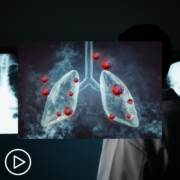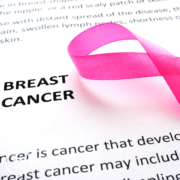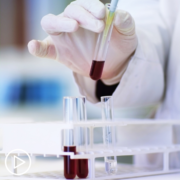What Are the Goals of Lung Cancer Treatment?
What Are the Goals of Lung Cancer Treatment? from Patient Empowerment Network on Vimeo.
The goals of lung cancer treatment can vary depending on the stage. Expert Dr. Heather Wakelee explains how lung cancer stage is determined and shares insight about the goals of treatment at each stage.
Dr. Heather Wakelee is a thoracic medical oncologist and deputy director of the Stanford Cancer Institute where she also serves as the division chief of medical oncology. Learn more about Dr. Wakelee, here.
See More From INSIST! Lung Cancer
Related Resources:
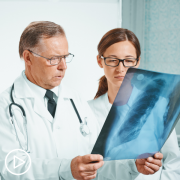
|
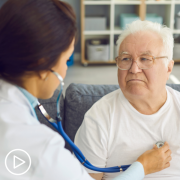
|
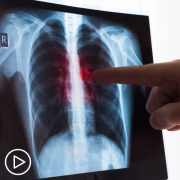
|
Transcript:
Katherine:
Let’s turn to treatment, Dr. Wakelee. On a basic level, what are the goals of treatment for lung cancer?
Dr. Wakelee:
So, with lung cancer, we’d love to cure everybody, that’s the ultimate goal, and do it in a way where people are able to continue living their life as they were before the cancer diagnosis. The ways that we do it, first of all, we’ve got to find the cancer, and that’s where screening is such an important aspect of things. If we can find the cancer at an earlier stage, we’re more likely to be able to cure someone.
So, what do I mean by “earlier stage?” Well, when a tumor first develops, usually, there is a single cell that develops a mutation, meaning a change in the gene, which gives that cell an advantage so it doesn’t die the way it’s supposed to. And then, it keeps growing, and dividing, and making new cells. And those over time get to a large enough size that they are the cancer. And given more time, those cancer cells start to spread into other parts of the body, usually first into what we call the lymph nodes, and from there then into other organs in the body. And this stage refers to health or how the cancer spread. So, the stage I cancer is still in that ball of cancer. Stage II means that it’s spread into some lymph nodes. Stage III is it spread into more lymph nodes, usually in the center part of the chest or mediastinum, and that’s where it starts to be much more difficult for the surgeons to be able to truly remove all of the cancer.
And then stage IV means that the cancer is not something that we’re going to be able to remove with surgery. It’s spread either within the lung to the lining of the lung or it has spread to other organs in the body. And so, when we talk about those stages that I, II, III, IV, it’s a bit more complicated than that. But, I think for most people, if they just think about it as stage I, just the cancer, stage II, lymph nodes and the lungs, stage III, lymph nodes in the center, and then stage IV, elsewhere, that’s a good way to kind of wrap your head around it.
And when we talk about stage I and II, that’s the truly early stage where we hope to be able to cure people with surgery. Surgery alone is enough for the majority of people with stage I cancer, and for maybe half, a little more than half of people with stage II. So, how can we be better than that? Well, that’s where there’s been a lot of new advances. So, adding chemotherapy after surgery can help a lot of stage II patients.
If the tumor genomic testing biomarkers shows that there’s a mutation called EGFR, we now know that there’s a pill drug that people can take that would prolong the time to when the cancer might come back. And then, just very recently, there was stated that that immune therapy drugs
IV can also prolong time to when the cancer comes back and maybe improve cure if the tumor has that biomarker called PD-L1. So, that’s that early stage. So it’s, again, getting more and more complicated and emphasizing that you’ve got to understand the biomarkers of the tumor to know how to best help someone.
When we move to stage III, some have surgery, but when you can’t have surgery, then we do the chemotherapy and the radiation. That’s the key part of the treatment there. And, we also know that immune therapy can be really helpful for a lot of patients when it’s given after the chemo and radiation’s completed. And then for stage IV, I talked about that already, which is you’ve gotta do the biomarkers to figure out the best treatments for some people starting with a targeted pill drug is the right thing if their tumor has those right gene mutations.
For other people, immune therapy alone might be an option if the PD-L1 level is very high and they don’t have one of those gene mutations in the tumor. And for a lot of people, chemotherapy or chemotherapy plus immunotherapy is the right strategy.
Katherine:
Would you help the audience understand the types of therapy for small cell lung cancer specifically?
Dr. Wakelee:
Yes. So, small cell still has the same kind of staging, but it’s a little bit more simple. We talk about extensive stage or limited stage. And what that has to do with is we rarely do surgery for small cell. It tends to have spread earlier. There are a few cases where that’s done, but normally, we divide it up into limited or extensive. And when we talk about that, limited is the radiation doctors can get all of the cancer in one radiation field, and then radiation plus chemotherapy is the standard approach to try to cure. If it’s more extensive than that, then it becomes extensive stage.
And, the best treatment are going to be chemotherapy plus those immune therapy drugs added together.
And so, the chemotherapy drugs that we use for non-small cell and small cell, the platinum drugs play a role in all of it. The drug we partner is a little bit different. There’s a drug etoposide we use a lot in small cell and a lot of other options for non-small cell. And then, the immune therapy drugs, there are a lot of options that are fairly similar for both small cell and for non-small cell.




